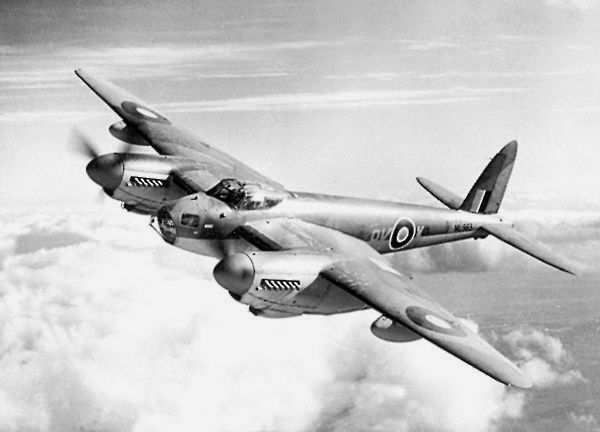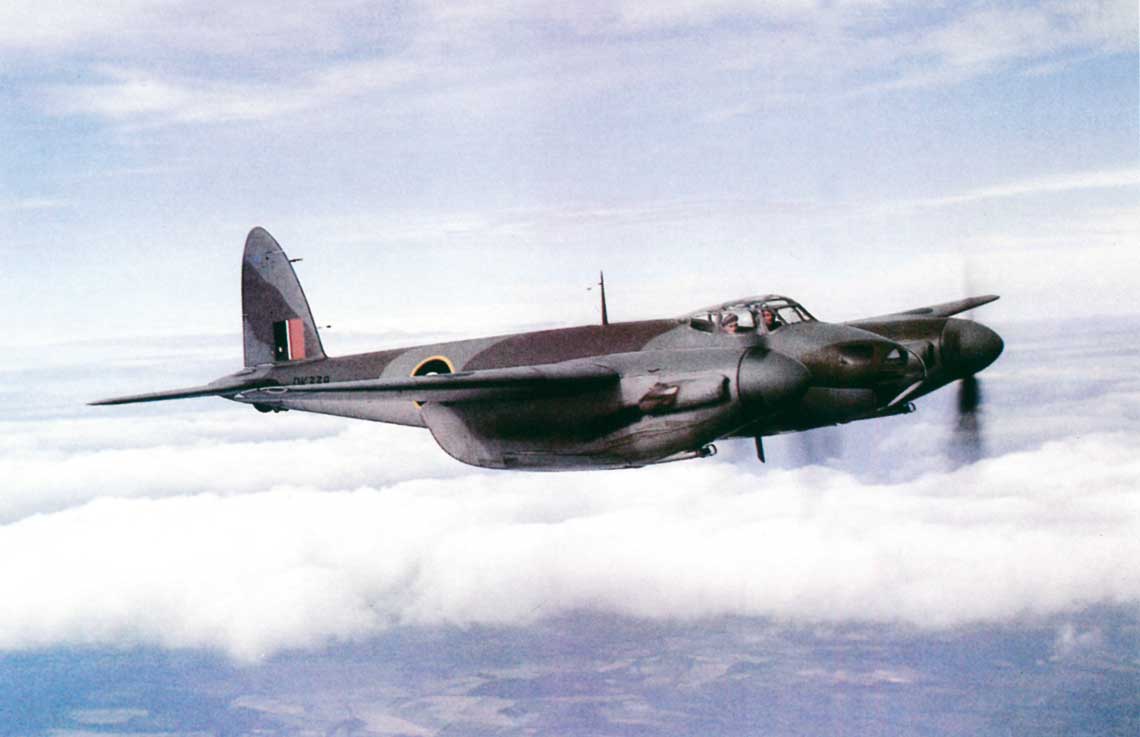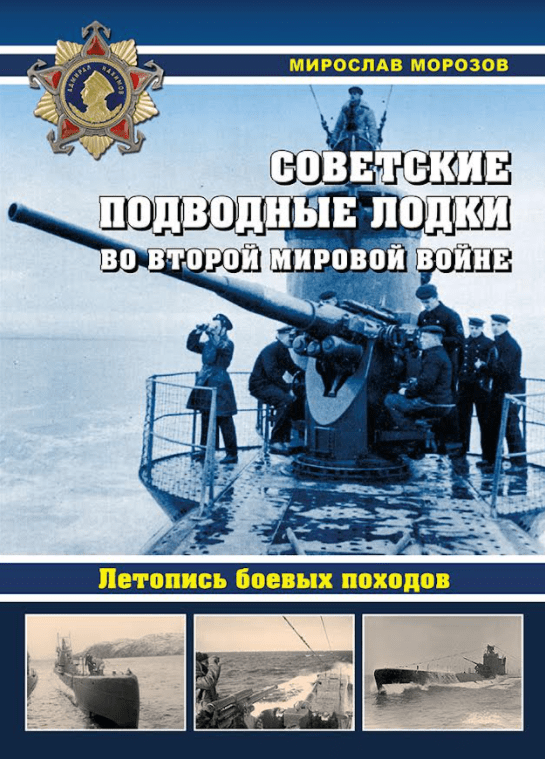
Plane de Havilland Mosquito - bomber versions

DH.98 Mosquito B.IV Series 2 DK 338
The de Havilland Mosquito is one of the most famous aircraft designs of World War II. It was one of the most versatile machines - it served as a day and night fighter, bomber, fighter-bomber and reconnaissance aircraft, and after the war also a torpedo bomber and aerial target tug. Interestingly, the individual versions have undergone relatively minor design changes. Its development began with a high-speed bomber.
The founder of de Havilland was Geoffrey de Havilland (1882-1965), a graduate of the Crystal Palace School of Engineering in Sydenham in the south London suburbs, who in 1903 began working as an engineer in the automotive industry, incl. as a draftsman at The Wolseley Tool and Motor Car Company Limited. However, he soon became interested in aviation and in December 1909, together with his friend Frank Hurl, completed the construction of his first aircraft. The first plane crashed, but soon both designers built a second one, and de Havilland learned to fly and soon received a pilot's license. When the First World War broke out, Geoffrey de Havilland was drafted into the Royal Flying Corps (RFC) and promoted to second lieutenant, but instead worked at the Royal Aircraft Establishment, Farnborough near London. Soon de Havilland, with the approval of the authorities, moved to the Aircraft Manufacturing Company (Airco), founded by wealthy newspaper publisher George Holt Thomas. Here he built several popular reconnaissance bombers,
with tym DH.4 and DH.9.
Airco prospered during the First World War when there were large military orders, but after the war, its situation deteriorated significantly. It was put up for sale in 1920, so Geoffrey de Havilland left to set up his own company, the de Havilland Aircraft Company Limited, on September 25, 1920. To this end, he rented a large plot of land in Deer Lane outside Edgware, a northwestern suburb of London. A grass airfield was laid out in this area, and the plant itself was housed in wooden hangars. Equipment and tools were mainly purchased from Airco - because the Birmingham Small Arms Company, which bought Airco, was not interested in aviation products and produced
surplus attachments for sale.
This factory focused primarily on the development of civilian aircraft, both communication and sport, but initially survived mainly on military orders such as the overhaul of 150 DH.9A aircraft. The first production de Havilland aircraft were produced in small batches. Six DH.18 liaison aircraft were built, two single-engine high-wing DH.6 Doncasters were commissioned by the Royal Air Force (RAF) as long-range experimental aircraft, and a further 29 DH.34 liaison aircraft were built. four-seater passenger cars DH..12 - 50 units were built. However, only the exceptionally successful construction of the DH.38 Moth brought stability and financial stability to the company. It was a school-sports biplane, two-seater, extremely easy to fly and economical. He made his first flight on February 60, 22 and soon became the flagship product of the company. A total of 1925 feathered moths and 403 gypsy moths were built; different engine type. Another 595 cars were licensed in the US, France and Australia. They were produced until the 90s. de Havilland mainly built aircraft of wooden construction, having accumulated considerable experience in this area, although there were also aircraft with a metal structure (steel tube fuselage covered with canvas), such as the DH.1934 Hyena. created. It was a reconnaissance aircraft built in duplicate, because the Air Force finally chose the competing Armstrong-Whitworth Atlas built
then 478 pcs.
